Tom Dixon
Tom Dixon is a British designer known for his innovative and contemporary designs in furniture, lighting, and accessories. Born in Tunisia in 1959, Dixon moved to England in his teens. He initially rose to prominence in the design world as the creative director for the brand Habitat in the 1980s.
In 2002, Tom Dixon established his own brand, Tom Dixon, which has since become internationally recognized for its distinctive and modern design aesthetic. His works often blend traditional craftsmanship with industrial processes, and he is known for experimenting with materials and forms.
Dixon's designs cover a wide range of products, including furniture, lighting fixtures, home accessories, and more. Some of his notable creations include the Copper Shade pendant light, the Beat Light series, and the Wingback Chair. His contributions to the design world have earned him numerous awards and accolades.
Tom got into welding through his love for motorcycles. He was captivated by the whole technique and process from the personal protection equipment, to how fast you can fabricate an idea. He went to art school in London but dropped out due to a motorcycle injury, a similar thing happened when he was trying to pursue a career in music as he was with a disco punk band.
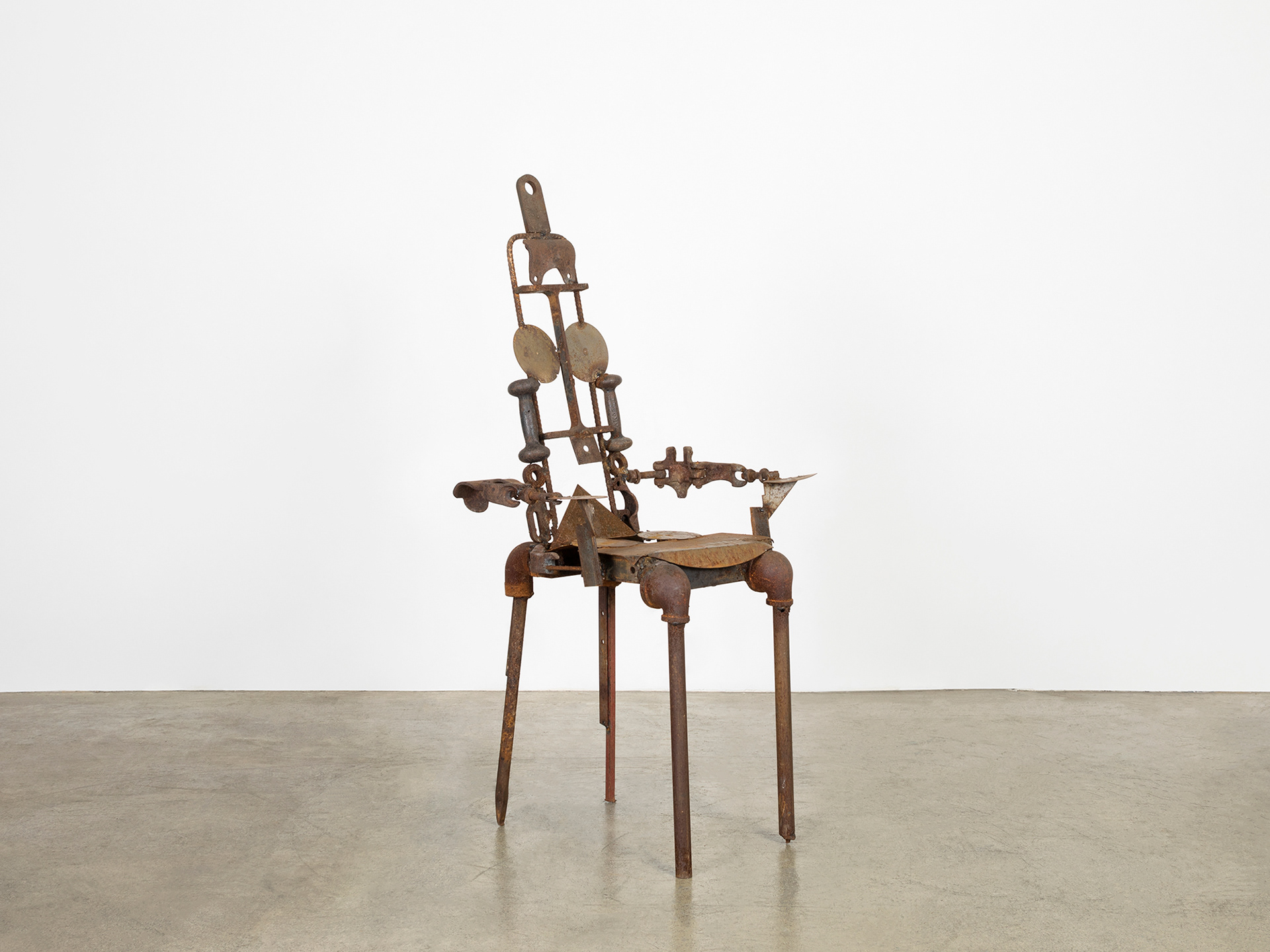
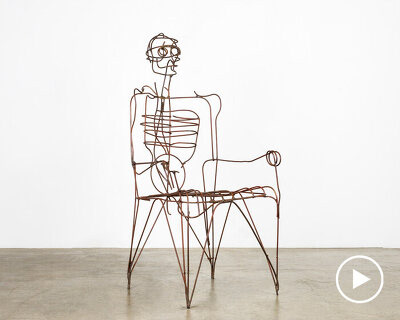
Tom has been an inspiration for my sketches and design ideas. His designs are detailed and functional but with alot of them being crafted from scrap metals he is showing he can crafts sustainably whilst also making beautiful artworks.
Aidan Donovan Design
Aidan is a narrative-focused furniture designer and maker. He uses sustainable British timbers to make beautiful pieces for the modern home. His work celebrates handwork, traditional solid timber construction, and functional, contemporary design. He specialises in bespoke commissions and small-scale production pieces, each designed to tel a unique story. His work is influenced by Modernist design as well as the imperfect beauty, freedom and playfulness of vernacular forms and folk art. Adian is also an exhibitor with GNCCF, this is the craft fair I have been looking into applying for with a similar design niche as to what I'm interested in. I love how Aidan turns everyday furniture pieces into timeless works of art. Some people overlook creative design when looking at functional items and I think Aidan does a great job of repurposing the everyday object with subtle hints of quality craftsmanship.
Magic Cabinet
A table top cabinet to store a collection of cards. The carcase features a continuous grain wrap and an inlay of 5 British timbers on top. The inlays draw on the mythology related to common British hardwoods to correlate with lore of Magic The Gathering. The cabinet houses four drawers with built in dividers. They are mounted on mechanical runners to ensure smooth running when under weight.
MILL Boot Bench
The MILL bench draws inspiration from the textile mills of the north. The bench is upholstered in Herdwick wool, a place to perch to take off your shoes. Below are slots for storing muddy boots and a set of hooks above for coats. This piece is from a collection of work exploring the historic wool industry in the North West of England.
WAGA table
A table exploring the idea of contrast and harmony
The dovetail form is often seen as emblematic of precision, high craft, and refinement. This is contrasted with the hand-carved fluted surface; irregular, organic, and associated with vernacular and folk craft. The name and texture are derivative of Wagatani style carved trays, both decorative and functional, the carving provides a tactile surface and somewhere to place drinks without concern of marring a perfect surface.
Studio Critical
Studio Critical is a Manchester / Salford based studio creating tactile wooden objects. Designer/Maker Nick Vorstermans focuses his practice on using locally and sustainably sourced materials. His wooden spoons, bowls, furniture & other objects are handmade - many of them from green wood salvaged from urban trees that fell naturally or were trimmed.
Studio Critical sees craft not only as the art of making beautiful, useful handmade objects; but as a form of protest. A protest against mass-produced, mass-consumed products clogging landfills, whose processes are ruining our environment. By engaging with craft we are showing that it is possible to make usable, beautiful objects from truly renewable and sustainable resources. Craft demands that the maker respects their material and process in a human-centric way. From using salvaged wood to reusing our wood waste as mulch in the allotment, Critical: is committed to having a low environmental impact.
I love the messages Nick puts behind his work. Through his artist statement, you can already see he's trying to protest against the big corporations of mass production as he is looking at a sustainable future. This piece below is a prime example of how he raises attention to an issue by creating thought-provoking furniture.
ASBO
( A Simple Bench, Officer)

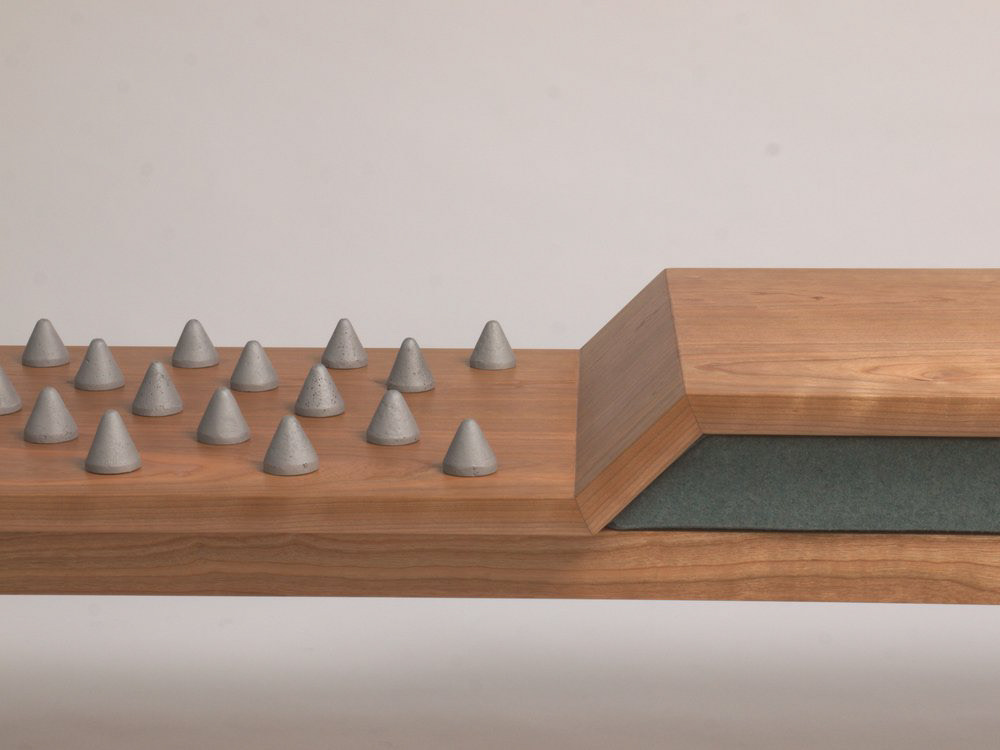
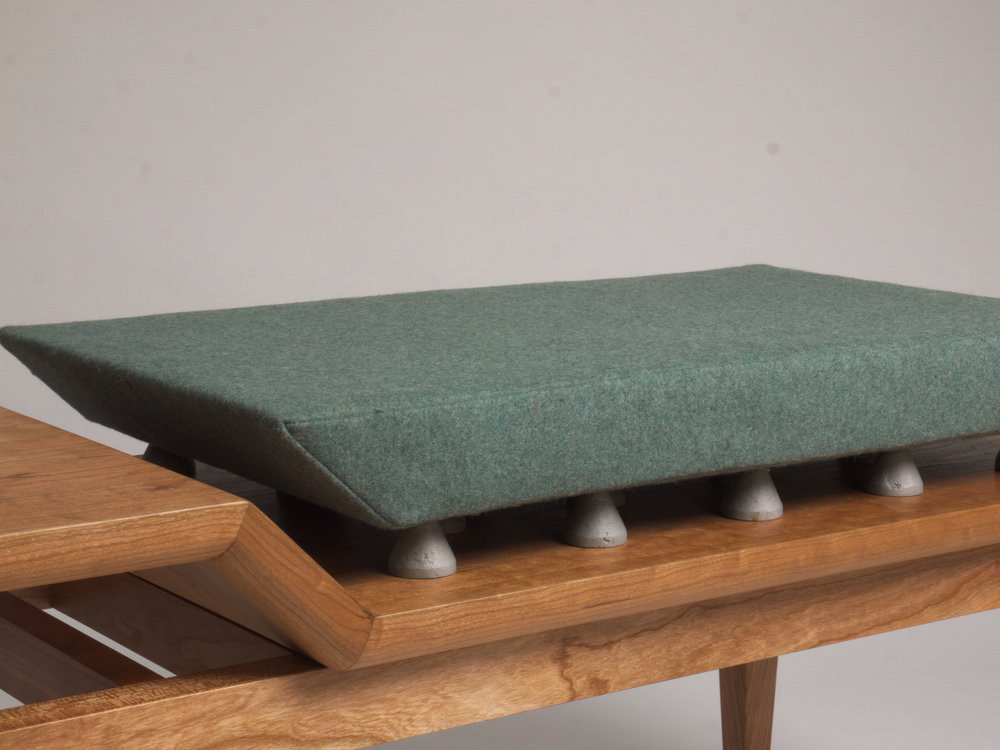
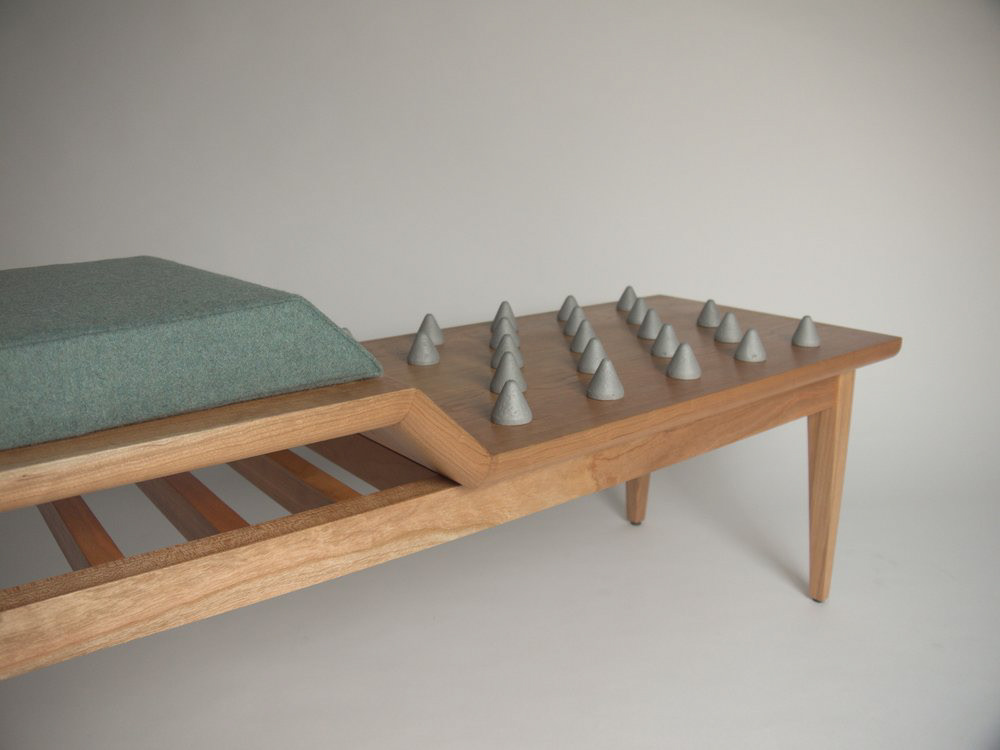
During my MA at MMU School of Art I engaged with the concept of Critical Design*, the result of which was the ASBO. Influenced by the designs of 1950's telephone table/benches and the overt hostile architecture becoming more prevalent in our modern city spaces. ASBO offers the user/s the experience of having an object of beauty infused with the tactics of hostile architecture in the domestic setting. It asks whether we are willing to give up some of our own comfort in order to offer a comfort to another.
* For those unfamiliar with British law, ASBO (Anti-Social Behaviour Order) is an order often used to target those people deemed “anti-social” by the police and public. It is an unfair and discriminatory order.
950-1320
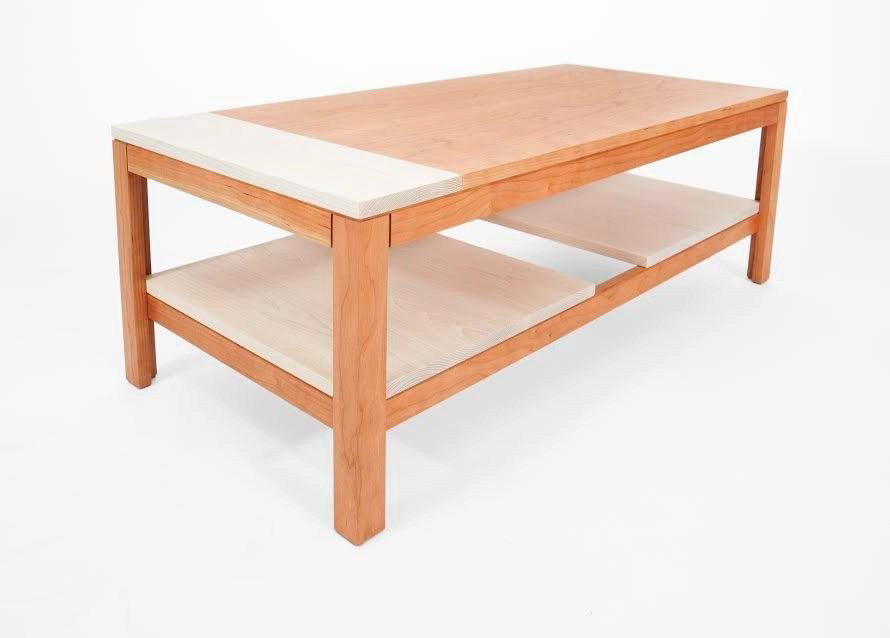
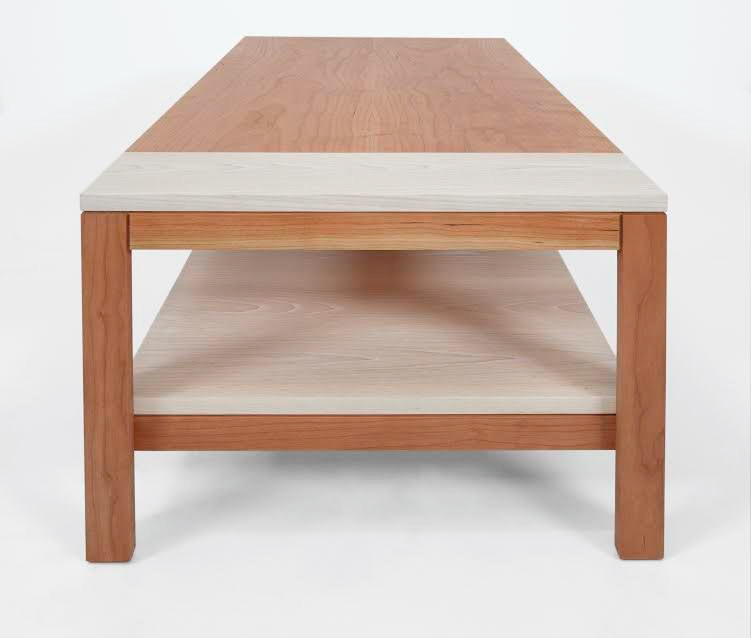
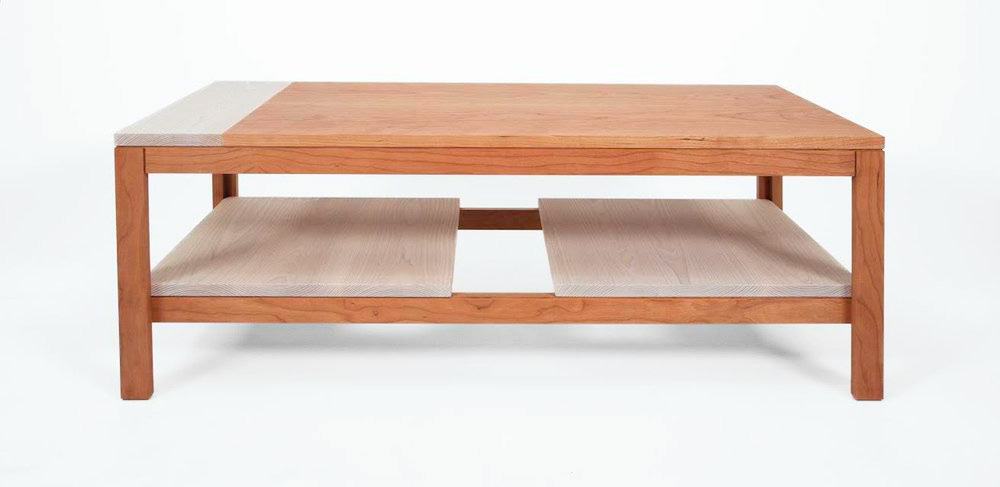

A light, airy coffee table playing with contrast and negative space. Made from Cherry finished with a natural oil/wax and Ash finished with a white pigmented oil/wax. The name 950 -1320 refers the Janka scale, which measures the hardness of wood, Cherry measures in at 950 and Ash at 1320.

